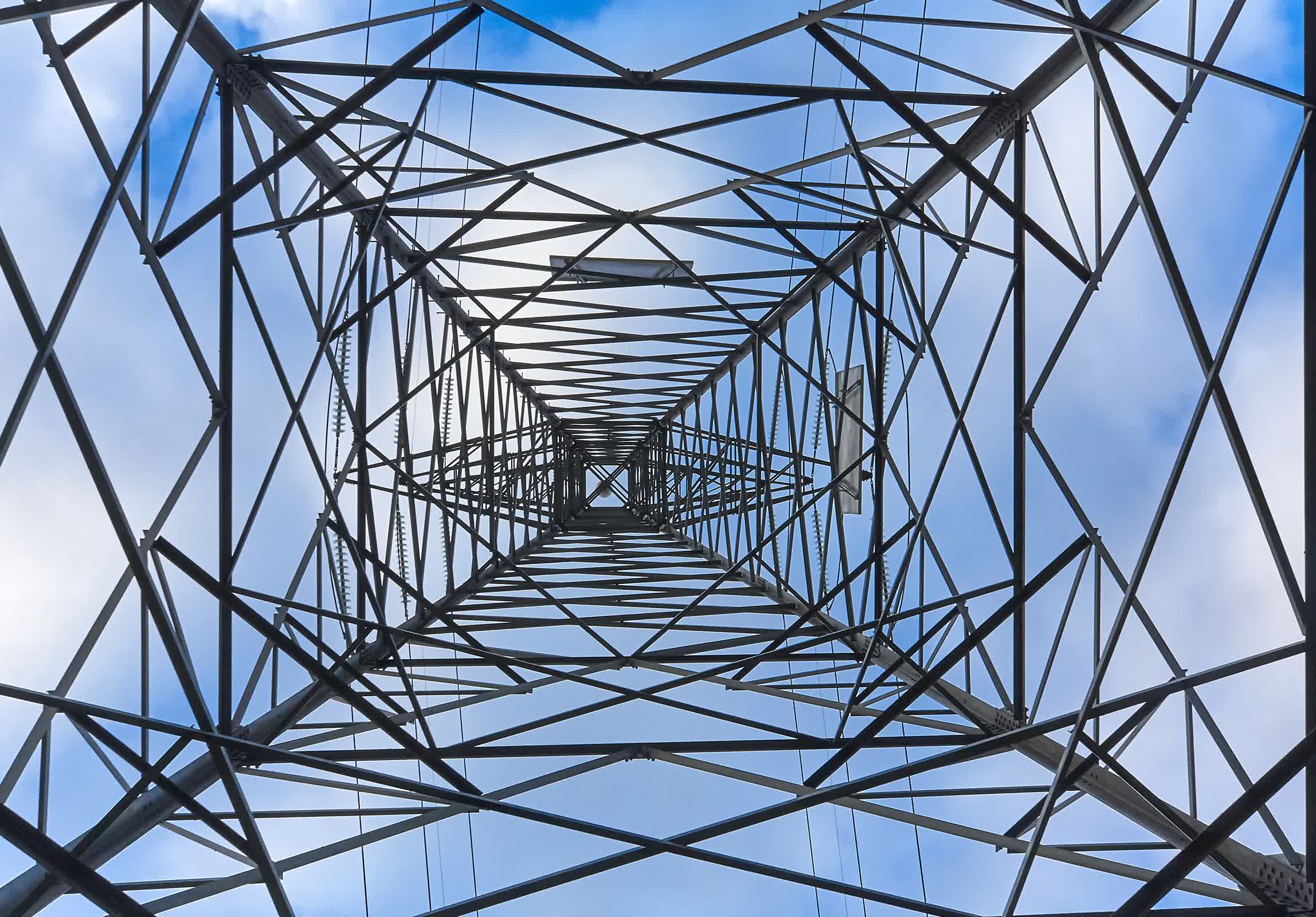CIOs baffled by ‘buzzwords, hype and confusion’ around AI
Technology leaders are baffled by a “cacophony” of “buzzwords, hype and confusion” over the benefits of artificial intelligence, according to the founder and CEO of technology company Pegasystems.
Alan Trefler, who is known for his prowess at chess and ping pong, as well as running a bn turnover tech company, spends much of his time meeting clients, CIOs and business leaders.
“I think CIOs are struggling to understand all of the buzzwords, hype and confusion that exists,” he said.
“The words AI and agentic are being thrown around in this great cacophony and they don’t know what it means. I hear that constantly.”
CIOs are under pressure from their CEOs, who are convinced AI will offer something valuable.
“CIOs are really hungry for pragmatic and practical solutions, and in the absence of those, many of them are doing a lot of experimentation,” said Trefler.
Companies are looking at large language models to summarise documents, or to help stimulate ideas for knowledge workers, or generate first drafts of reports – all of which will save time and make people more productive.
But Trefler said companies are wary of letting AI loose on critical business applications, because it’s just too unpredictable and prone to hallucinations.
“There is a lot of fear over handing things over to something that no one understands exactly how it works, and that is the absolute state of play when it comes to general AI models,” he said.
Trefler is scathing about big tech companies that are pushing AI agents and large language models for business-critical applications. “I think they have taken an expedient but short-sighted path,” he said.
“I believe the idea that you will turn over critical business operations to an agent, when those operations have to be predictable, reliable, precise and fair to clients … is something that is full of issues, not just in the short term, but structurally.”
One of the problems is that generative AI models are extraordinarily sensitive to the data they are trained on and the construction of the prompts used to instruct them. A slight change in a prompt or in the training data can lead to a very different outcome.
For example, a business banking application might learn its customer is a bit richer or a bit poorer than expected.
“You could easily imagine the prompt deciding to change the interest rate charged, whether that was what the institution wanted or whether it would be legal according to the various regulations that lenders must comply with,” said Trefler.
Trefler said Pega has taken a different approach to some other technology suppliers in the way it adds AI into business applications.
Rather than using AI agents to solve problems in real time, AI agents do their thinking in advance.
Business experts can use them to help them co-design business processes to perform anything from assessing a loan application, giving an offer to a valued customer, or sending out an invoice.
Companies can still deploy AI chatbots and bots capable of answering queries on the phone. Their job is not to work out the solution from scratch for every enquiry, but to decide which is the right pre-written process to follow.
As Trefler put it, design agents can create “dozens and dozens” of workflows to handle all the actions a company needs to take care of its customers.
“You just use the natural language model for semantics to be able to handle the miracle of getting the language right, but tie that language to workflows, so that you have reliable, predictable, regulatory-approved ways to execute,” he said.
Large language modelsare not always the right solution. Trefler demonstrated how ChatGPT 4.0 tried and failed to solve a chess puzzle. The LLM repeatedly suggested impossible or illegal moves, despite Trefler’s corrections. On the other hand, another AI tool, Stockfish, a dedicated chess engine, solved the problem instantly.
The other drawback with LLMs is that they consume vast amounts of energy. That means if AI agents are reasoning during “run time”, they are going to consume hundreds of times more electricity than an AI agent that simply selects from pre-determined workflows, said Trefler.
“ChatGPT is inherently, enormously consumptive … as it’s answering your question, its firing literally hundreds of millions to trillions of nodes,” he said. “All of that takeselectricity.”
Using an employee pay claim as an example, Trefler said a better alternative is to generate, say, 30 alternative workflows to cover the major variations found in a pay claim.
That gives you “real specificity and real efficiency”, he said. “And it’s a very different approach to turning a process over to a machine with a prompt and letting the machine reason it through every single time.”
“If you go down the philosophy of using a graphics processing unitto do the creation of a workflow and a workflow engine to execute the workflow, the workflow engine takes a 200th of the electricity because there is no reasoning,” said Trefler.
He is clear that the growing use of AI will have a profound effect on the jobs market, and that whole categories of jobs will disappear.
The need for translators, for example, is likely to dry up by 2027 as AI systems become better at translating spoken and written language. Google’s real-time translator is already “frighteningly good” and improving.
Pega now plans to work more closely with its network of system integrators, including Accenture and Cognizant to deliver AI services to businesses.
An initiative launched last week will allow system integrators to incorporate their own best practices and tools into Pega’s rapid workflow development tools. The move will mean Pega’s technology reaches a wider range of businesses.
Under the programme, known as Powered by Pega Blueprint, system integrators will be able to deploy customised versions of Blueprint.
They can use the tool to reverse-engineer ageing applications and replace them with modern AI workflows that can run on Pega’s cloud-based platform.
“The idea is that we are looking to make this Blueprint Agent design approach available not just through us, but through a bunch of major partners supplemented with their own intellectual property,” said Trefler.
That represents a major expansion for Pega, which has largely concentrated on supplying technology to several hundred clients, representing the top Fortune 500 companies.
“We have never done something like this before, and I think that is going to lead to a massive shift in how this technology can go out to market,” he added.
When AI agents behave in unexpected ways
Iris is incredibly smart, diligent and a delight to work with. If you ask her, she will tell you she is an intern at Pegasystems, and that she lives in a lighthouse on the island of Texel, north of the Netherlands. She is, of course, an AI agent.
When one executive at Pega emailed Iris and asked her to write a proposal for a financial services company based on his notes and internet research, Iris got to work.
Some time later, the executive received a phone call from the company. “‘Listen, we got a proposal from Pega,’” recalled Rob Walker, vice-president at Pega, speaking at the Pegaworld conference last week. “‘It’s a good proposal, but it seems to be signed by one of your interns, and in her signature, it says she lives in a lighthouse.’ That taught us early on that agents like Iris need a safety harness.”
The developers banned Iris from sending an email to anyone other than the person who sent the original request.
Then Pega’s ethics department sent Iris a potentially abusive email from a Pega employee to test her response.
Iris reasoned that the email was either a joke, abusive, or that the employee was under distress, said Walker.
She considered forwarding the email to the employee’s manager or to HR. But both of these options were now blocked by her developers. “So what does she do? She sent an out of office,” he said. “Conflict avoidance, right? So human, but very creative.”
#cios #baffled #buzzwords #hype #confusionCIOs baffled by ‘buzzwords, hype and confusion’ around AI
Technology leaders are baffled by a “cacophony” of “buzzwords, hype and confusion” over the benefits of artificial intelligence, according to the founder and CEO of technology company Pegasystems.
Alan Trefler, who is known for his prowess at chess and ping pong, as well as running a bn turnover tech company, spends much of his time meeting clients, CIOs and business leaders.
“I think CIOs are struggling to understand all of the buzzwords, hype and confusion that exists,” he said.
“The words AI and agentic are being thrown around in this great cacophony and they don’t know what it means. I hear that constantly.”
CIOs are under pressure from their CEOs, who are convinced AI will offer something valuable.
“CIOs are really hungry for pragmatic and practical solutions, and in the absence of those, many of them are doing a lot of experimentation,” said Trefler.
Companies are looking at large language models to summarise documents, or to help stimulate ideas for knowledge workers, or generate first drafts of reports – all of which will save time and make people more productive.
But Trefler said companies are wary of letting AI loose on critical business applications, because it’s just too unpredictable and prone to hallucinations.
“There is a lot of fear over handing things over to something that no one understands exactly how it works, and that is the absolute state of play when it comes to general AI models,” he said.
Trefler is scathing about big tech companies that are pushing AI agents and large language models for business-critical applications. “I think they have taken an expedient but short-sighted path,” he said.
“I believe the idea that you will turn over critical business operations to an agent, when those operations have to be predictable, reliable, precise and fair to clients … is something that is full of issues, not just in the short term, but structurally.”
One of the problems is that generative AI models are extraordinarily sensitive to the data they are trained on and the construction of the prompts used to instruct them. A slight change in a prompt or in the training data can lead to a very different outcome.
For example, a business banking application might learn its customer is a bit richer or a bit poorer than expected.
“You could easily imagine the prompt deciding to change the interest rate charged, whether that was what the institution wanted or whether it would be legal according to the various regulations that lenders must comply with,” said Trefler.
Trefler said Pega has taken a different approach to some other technology suppliers in the way it adds AI into business applications.
Rather than using AI agents to solve problems in real time, AI agents do their thinking in advance.
Business experts can use them to help them co-design business processes to perform anything from assessing a loan application, giving an offer to a valued customer, or sending out an invoice.
Companies can still deploy AI chatbots and bots capable of answering queries on the phone. Their job is not to work out the solution from scratch for every enquiry, but to decide which is the right pre-written process to follow.
As Trefler put it, design agents can create “dozens and dozens” of workflows to handle all the actions a company needs to take care of its customers.
“You just use the natural language model for semantics to be able to handle the miracle of getting the language right, but tie that language to workflows, so that you have reliable, predictable, regulatory-approved ways to execute,” he said.
Large language modelsare not always the right solution. Trefler demonstrated how ChatGPT 4.0 tried and failed to solve a chess puzzle. The LLM repeatedly suggested impossible or illegal moves, despite Trefler’s corrections. On the other hand, another AI tool, Stockfish, a dedicated chess engine, solved the problem instantly.
The other drawback with LLMs is that they consume vast amounts of energy. That means if AI agents are reasoning during “run time”, they are going to consume hundreds of times more electricity than an AI agent that simply selects from pre-determined workflows, said Trefler.
“ChatGPT is inherently, enormously consumptive … as it’s answering your question, its firing literally hundreds of millions to trillions of nodes,” he said. “All of that takeselectricity.”
Using an employee pay claim as an example, Trefler said a better alternative is to generate, say, 30 alternative workflows to cover the major variations found in a pay claim.
That gives you “real specificity and real efficiency”, he said. “And it’s a very different approach to turning a process over to a machine with a prompt and letting the machine reason it through every single time.”
“If you go down the philosophy of using a graphics processing unitto do the creation of a workflow and a workflow engine to execute the workflow, the workflow engine takes a 200th of the electricity because there is no reasoning,” said Trefler.
He is clear that the growing use of AI will have a profound effect on the jobs market, and that whole categories of jobs will disappear.
The need for translators, for example, is likely to dry up by 2027 as AI systems become better at translating spoken and written language. Google’s real-time translator is already “frighteningly good” and improving.
Pega now plans to work more closely with its network of system integrators, including Accenture and Cognizant to deliver AI services to businesses.
An initiative launched last week will allow system integrators to incorporate their own best practices and tools into Pega’s rapid workflow development tools. The move will mean Pega’s technology reaches a wider range of businesses.
Under the programme, known as Powered by Pega Blueprint, system integrators will be able to deploy customised versions of Blueprint.
They can use the tool to reverse-engineer ageing applications and replace them with modern AI workflows that can run on Pega’s cloud-based platform.
“The idea is that we are looking to make this Blueprint Agent design approach available not just through us, but through a bunch of major partners supplemented with their own intellectual property,” said Trefler.
That represents a major expansion for Pega, which has largely concentrated on supplying technology to several hundred clients, representing the top Fortune 500 companies.
“We have never done something like this before, and I think that is going to lead to a massive shift in how this technology can go out to market,” he added.
When AI agents behave in unexpected ways
Iris is incredibly smart, diligent and a delight to work with. If you ask her, she will tell you she is an intern at Pegasystems, and that she lives in a lighthouse on the island of Texel, north of the Netherlands. She is, of course, an AI agent.
When one executive at Pega emailed Iris and asked her to write a proposal for a financial services company based on his notes and internet research, Iris got to work.
Some time later, the executive received a phone call from the company. “‘Listen, we got a proposal from Pega,’” recalled Rob Walker, vice-president at Pega, speaking at the Pegaworld conference last week. “‘It’s a good proposal, but it seems to be signed by one of your interns, and in her signature, it says she lives in a lighthouse.’ That taught us early on that agents like Iris need a safety harness.”
The developers banned Iris from sending an email to anyone other than the person who sent the original request.
Then Pega’s ethics department sent Iris a potentially abusive email from a Pega employee to test her response.
Iris reasoned that the email was either a joke, abusive, or that the employee was under distress, said Walker.
She considered forwarding the email to the employee’s manager or to HR. But both of these options were now blocked by her developers. “So what does she do? She sent an out of office,” he said. “Conflict avoidance, right? So human, but very creative.”
#cios #baffled #buzzwords #hype #confusion



















